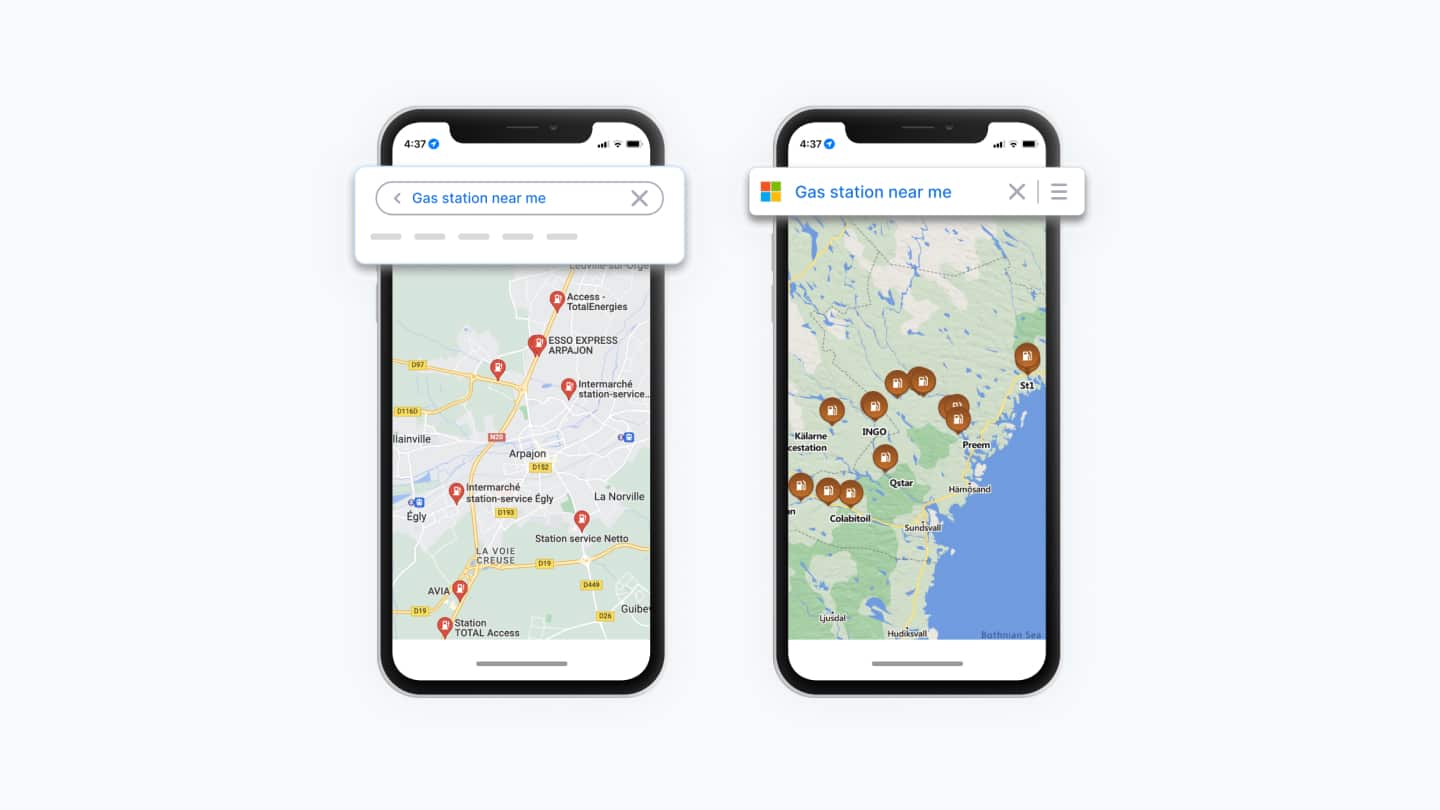Publishing a website is a major step, but getting people to find it is an entirely different challenge. You might invest countless hours fine-tuning the design, choosing the right visuals, and creating content that truly reflects your brand. Yet, it’s all too common to search for your own business on Google and not see your site anywhere in the results. That’s because over 1.9 billion websites exist today, and the competition for visibility is intense. A well-designed site alone won’t guarantee results. For many users, your website is their first point of contact with your brand, so being easy to find matters. Without a focused strategy that brings together strong content, technical optimization, and clear audience targeting, even the most thoughtfully built websites can stay out of sight.
But first, why does visibility matter?
Organic search generates the majority of web traffic. With Google processing over 90% of all global searches, it remains the primary gateway for people to discover businesses online. This makes the improvement of a web page’s visibility on Google vital for attracting an audience that is more likely to engage, convert, and become loyal customers.
7 Strategies to Boost Your Search Visibility
1. Create content that truly interests your audience
The foundation of visibility is content that matches what your audience actively looks for. Use research tools like Semrush, Ahrefs, or Google’s autocomplete to find trending topics and search queries. To gain a more comprehensive understanding of your audience, also explore discussions on platforms such as Reddit or industry-specific forums, where concerns and questions that traditional keyword data may overlook.
These insights enable you to create content that directly addresses authentic user needs, boosting engagement and encouraging visitors to stay longer or share your pages. By focusing on authentic user needs, you create detailed, valuable content that builds trust and authority. This approach keeps visitors interested and increases the chances of your content being shared. Ultimately, aligning your content with genuine user intent enhances search rankings and delivers a more satisfying experience for your audience.
2. Focus on content depth and intent, not just keywords
The days of keyword stuffing are long gone. Google’s algorithms have become smarter and more user-focused. Especially with the rise of AI-generated content, stricter quality benchmarks, and updates like Google’s Helpful Content system, relying on keyword repetition no longer works. Additionally, Google prioritizes content that closely aligns with user intent, rewarding pages that provide clear, relevant, and valuable answers to real queries. This focus has intensified with recent algorithm updates, including the Helpful Content Update and core updates in 2023 and 2024, which have raised the standards for ranking well. Simply repeating keywords is no longer effective. Instead, content must effectively solve problems, explain concepts, or support decisions to engage users and build lasting trust. According to Google’s Search Quality Evaluator Guidelines, content should demonstrate Experience, Expertise, Authoritativeness, and Trustworthiness (E-E-A-T), especially on “Your Money or Your Life” (YMYL) topics like finance, health, and safety.
Alongside depth, authenticity and creativity play a crucial role in helping your content stand out. Instead of replicating AI-generated text, your content should bring fresh perspectives and original insights rooted in real human experience. This genuine approach grabs the audience’s attention and signals to Google that your content delivers true value. When thorough, intent-driven information is combined with authentic and creative expression, it strengthens your site’s visibility and builds meaningful connections with visitors.
3. Improve page speed to lower bounce rates and for better rankings
site. Google evaluates site performance through Core Web Vitals, a set of metrics that assess real-world user experienceTo evaluate site performance, Google uses Core Web Vitals, a set of real-world metrics including Largest Contentful Paint (LCP), which measures how quickly the main content loads; First Input Delay (FID), which tracks responsiveness to a user’s first interaction; and Cumulative Layout Shift (CLS), which evaluates the visual stability of the page as it loads. While these factors indicate a slow or unstable experience, users tend to get frustrated and leave quickly, which leads to lower engagement and harms your ranking. Conversely, pages that load quickly and remain visually stable offer a smoother experience, making it easier for visitors to find what they need and encouraging them to stay longer.
To enhance page speed, focus on:
- Compressing images to reduce file sizes
- Minimizing CSS, JavaScript, and HTML
- Implementing browser caching and lazy loading
- Using a content delivery network (CDN) for quicker server response
Beyond technical optimizations, when creating a landing page or website, choose designs that are visually appealing while prioritizing simplicity and practicality. Striking this balance ensures your site looks attractive without unnecessary complexity that can slow down loading times. A clean, straightforward design improves the user experience, supports faster page loading, contributes to the improvement of a web page’s visibility, and keeps visitors engaged longer.

4. Make the website mobile-friendly
More than half of all internet traffic now comes from mobile devices. People rely on their phones and tablets to browse, shop, and search for information throughout the day. If your website isn’t easy to use or navigate on these devices, you could be turning away a large portion of potential visitors without even realizing it. Ensuring mobile compatibility is essential to connect with today’s users effectively.
Google’s mobile-first indexing means the search engine primarily looks at the mobile version of your website when determining rankings. If your site is slow or difficult to use on mobile, it won’t rank as well, limiting your visibility in search results. Making your site mobile-friendly helps provide a smoother user experience, encourages visitors to stay longer, and improves your chances of ranking higher. This is a critical step for maintaining competitiveness and attracting more traffic.
5. Optimize and maintain your Google Business Profile
For locally operating businesses and those catering to specific geographic areas, an optimized Google Business Profile is imperative in order to be visible in local search. This profile is your online shopfront on Google Search and Maps, giving potential clients important information like your address, contact number, business hours, and pictures. Keeping your information accurate and current enables Google to better understand your business and boosts your chances of being shown in local searches related to your business.
In addition to listing information, having an active profile maintained through answering customer reviews and updating information can increase engagement and trust. Also, having a stream of positive reviews from satisfied customers increases your reputation and informs potential clients’ decision-making. An optimized Google Business Profile increases visibility and also enhances your connection to the local community, attracting more foot traffic and enquiries.

6. Earn backlinks from trusted sources
Backlinks are still a major factor search engines consider when evaluating a website’s credibility and overall authority, but they aren’t a direct driver of traffic to individual pages. While studies often show that top-ranking pages tend to have more backlinks, this doesn’t always mean those links are responsible for higher traffic. In reality, content that is well optimized, aligns with search intent, and meets user expectations can perform well even with limited backlink support.
That said, maintaining a strong backlink profile does contribute to your domain’s trustworthiness in the eyes of search engines. This broader authority can make it easier for all types of content on your site, whether blogs, landing pages, or tools, to rank well over time. Instead of focusing on aggressive link building, invest in creating meaningful content, contributing to credible platforms, and building relationships with trusted sources. Additionally, this approach helps you earn backlinks naturally while ensuring your content remains useful, accurate, and aligned with what people are actually searching for.
7. Submit your website to Google Search Console
One of the most effective ways to ensure Google properly crawls and indexes your website is by submitting your sitemap through Google Search Console. A sitemap outlines the structure of your site and points search engines toward your most important pages. This step is especially crucial for new websites, large sites with deep architecture, or any platform undergoing frequent updates.
Google Search Console is the free platform that facilitates this process and provides valuable insights into your site’s overall search performance. Once your sitemap is submitted, the tool helps you monitor indexing status, identify technical issues such as mobile usability errors or page experience warnings, and resolve them before they affect visibility. Additionally, it shows which keywords are driving traffic to your pages and how your content is performing in search. These insights are essential for shaping an SEO strategy that’s rooted in real user behaviour and search trends.
Quality of content comes first for ranking success
The strategies mentioned earlier provide a solid foundation for building your SEO efforts. However, standing out in a crowded digital space requires more than just following the basics. Success depends on prioritizing quality content that offers depth, stays relevant, and focuses on the topics your audience is actively searching for. At its core, quality means creating content that thoroughly addresses real questions, provides valuable insights, and aligns closely with user intent. When your content meets these standards, it attracts visitors, builds trust, and establishes your authority over time.
If you’re ready to move beyond average rankings and truly connect with the right audience, Sandstorm Studios is here to help you get there. We’ve worked with brands across different industries, with practical SEO expertise and proven strategies to strengthen their online presence. Whether you want to attract high-intent traffic, establish credibility, or stay ahead in competitive search spaces, our team is ready to help you grow, anchored in clarity, strategy, and content that truly adds value.

